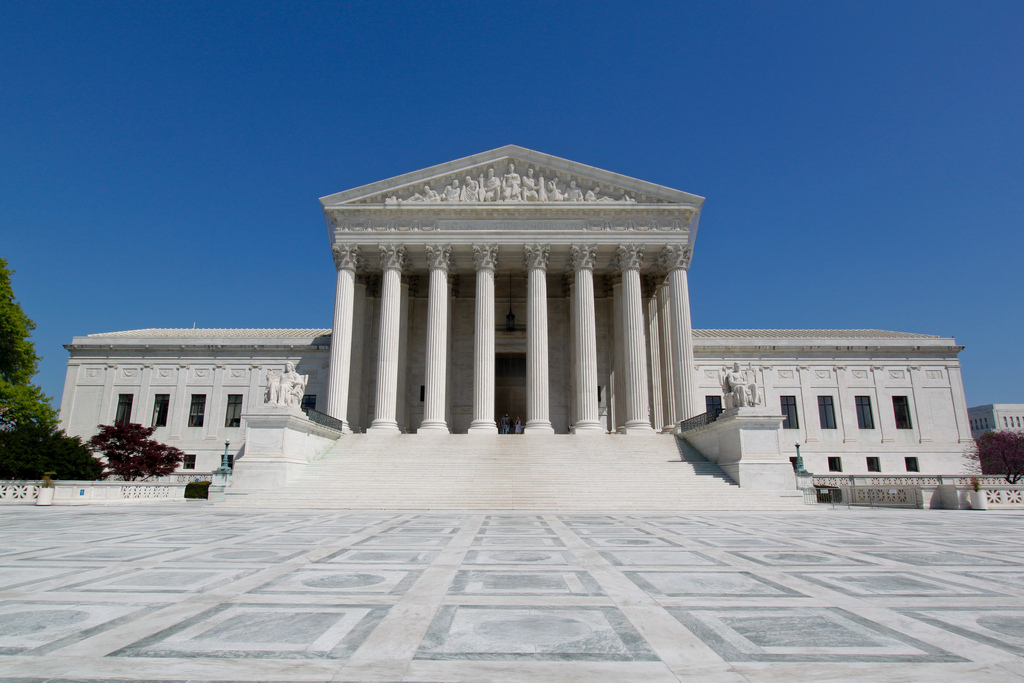By Bhanodai Pippala
With less than a week before Election Day, Republican Presidential candidate Donald Trump has suffered declining support after the audio leak of his lewd conversation with Access Hollywood’s Billy Bush. In response to the leak, many prominent Republicans including U.S. Senator from Arizona John McCain retracted their support for the 2016 Republican Presidential candidate. Other high ranking Republicans such as Speaker of the House Paul Ryan didn’t retract their endorsement of Trump, but Ryan instead commented that he was “sickened” by the audio and would not attend campaign events in Wisconsin in support of the candidate. Even with the content of the comments from the leaked audio and several criticisms from well-known Republicans, Trump’s base continues to support him as the potential to appoint new justices to the Supreme Court can carry a President’s legacy past his or her time in office.
Since the retirements of many liberal leaning justices during the late 1960s under the leadership of Chief Justice Earl Warren, the Court has leaned conservative with new appointments under Republican presidents. With the death of Antonin Scalia and possible confirmation of Merrick Garland, the Court could return to a liberal tilt not seen since the 1950s and 1960s. Currently the Court consists of four Democrat-appointed justices and four Republican-appointed justices with one unoccupied seat. Thus, this election is also crucial because the next president will be able to appoint a justice to lead either a left- or right-leaning Court that will affect the nation for decades to come. Trump’s supporters may not approve of his personal actions, but they do not want a Supreme Court filled with majority Democrat appointees.
Further appointments that could shift the ideological balance of the Court are prompted not only by an empty seat but by the aging justices who are ready to retire from service. Currently there are four justices who have served more than twenty years (Anthony Kennedy, Clarence Thomas, Ruth Bader Ginsberg, and Stephen Breyer) who may decide to leave sometime within the next presidential term. Therefore, the next President could appoint up to five justices and solidify his or her policy legacy beyond four or eight years.
The absence of a full Court has already affected the cases heard in the last term. In U.S. v. Texas, the Court was deadlocked in a 4-4 vote which stalled the Obama administration’s actions in protecting millions of undocumented immigrants from deportation. In Fisher v. University of Texas, the Court in a 4-3 decision upheld the University’s affirmative action program. A full Court with new Republican appointees could have shifted the decision in ruling the affirmative action program as unconstitutional. Otherwise, Democrat appointees could have solidified the ruling with a greater margin against the dissent. A full Court would have made the biggest impact in the case Friedrichs v. California Teachers Association, which was deadlocked in a 4-4 decision that upheld the practice of non-union public employees being forced to pay fees for collective bargaining. The inclusion of another liberal or conservative justice would have shifted the decision either way.
The October 19 debate between Hillary Clinton and Donald Trump saw both candidates field questions about the Supreme Court from moderator and Fox News contributor Chris Wallace. The first question regarding the Supreme Court dealt with the candidates’ views on the future of the Court and how the Constitution was interpreted. Clinton responded that she would appoint justices that would not “reverse marriage equality”, referring to the 2015 decision Obergefell v. Hodges which legalized same-sex marriage across the nation. Clinton also advocated for appointing justices that would not “reverse Roe v. Wade” which references a 1973 decision that upheld a woman’s right to an abortion under the Constitution. Trump responded to Wallace’s question by promising to appoint justices that would be “pro-life” and have a “conservative bent.” Trump and Clinton both gave answers in hope of garnering undecided voters who may view social issues such as abortion and gay marriage as important issues.
It is highly possible for the Court to overturn previous major rulings such as Roe v. Wade through membership changes. Justices Clarence Thomas and Antonin Scalia have consistently stated that there is no constitutionally protected right to an abortion. The Court is currently split equally among Democrat- and Republican-appointed justices. If Donald Trump or Hillary Clinton wins the presidency on November 8, the Senate would most likely confirm an appointment brought forth by the President-elect, provided that the Senate would not risk lower approval ratings in exchange for delaying future appointments to the nation’s highest judicial body. If a case such as Roe were to be overturned, the time to implement the decision would be dependent on a timeline set forth by the Court. The justices may even ask lower federal courts to oversee the implementation of its decisions.
The Supreme Court will be transformed for decades to come no matter who becomes president on November 8. The Court could become the most liberal since 1969 or more conservative under a larger coalition of justices. At stake for the next term in the Supreme Court are transgender rights when using bathrooms, separation of church and state with the usage of state funds for a secular program, the limits of what is considered insider trading, racial bias in juries, and many more pressing issues as the Court starts its term in late October.


